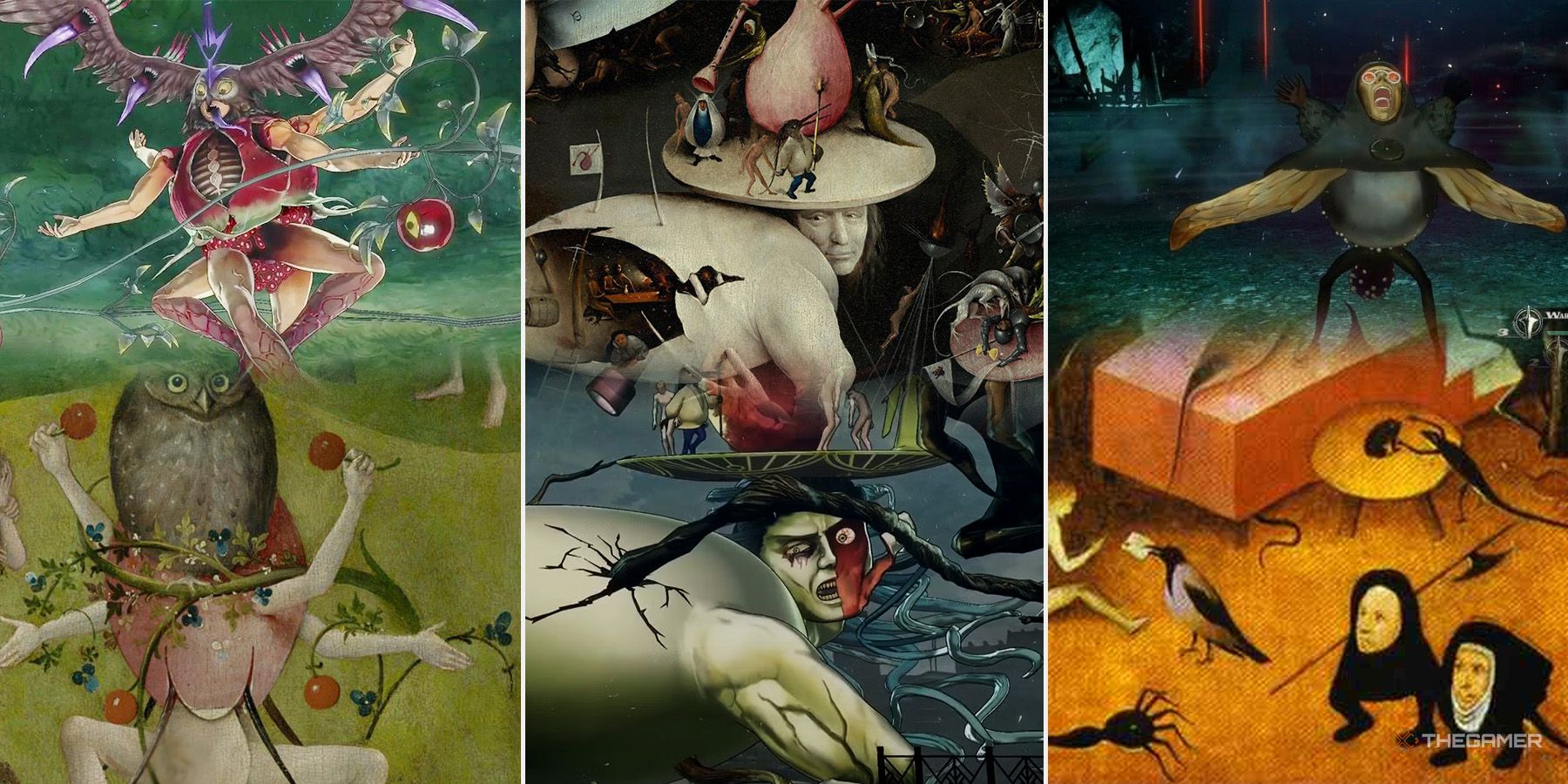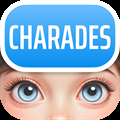Metaphor: ReFantazio - 5 Humans And The Art That Inspired Them

Summary
- Metaphor ReFantazio's character design draws directly from 16th-century Dutch painter Hieronymous Bosch's surrealistic works.
- The game features grotesque boss battles inspired by Bosch's art, showcasing human figures in monstrous forms.
- Historical references in Metaphor deepen ties with Atlus' Persona series, with Homo Oppo being a prime example.
The team behind Metaphor: ReFantaziois no stranger to historical references. Studio Zero is, after all, a conglomerate of Atlus veterans. These master storytellers have always worn their love for history on their sleeve, but Metaphor puts that passion at the forefront of its character design. Metaphor’s colorful fantasy world overflows with historical parallels, but some of the most obvious examples are — quite literally — gigantic.
Related7 Games To Play If You Like Metaphor: ReFantazio
If you loved Atlus' hit, Metaphor: ReFantazio and wanted more of it, here are some other games that have a similar take in combat, setting, and more.
Posts 2In Metaphor’s world, humans are the enemy. However, as the game’s title implies, 'humans' is little more than a metaphor. These enemies may have human traits, but they lack many identifiable human characteristics. Instead, they assume twisted, surrealist forms inspired by an unlikely source: 16th-century Dutch painter Hieronymous Bosch.
Hieronymous Bosch was a leader of the Early Netherlandic school of painting. Born in Brabant, his paintings often focused on whimsical interpretations of religious themes. His best-known piece is a triptych (three-paneled artwork) altarpiece, The Garden of Earthly Delights, painted between 1490 and 1510 CE.
5 Homo Avades
CloseHomo Avades is one of the team’s most direct historical references. Everything about the gargantuan beast is a direct parallel to an unfortunate soul trapped in the 'Hell' section of Heironymous Bosch’s most famous artwork, The Garden of Earthly Delights. In later stages of the epic boss battle, you’ll even see Homo Avades’ eggshell crack open, revealing a fleshy inner chamber.
Bosch’s most famous painting is a remarkably surrealist work for something that precedes the formal Surrealism movement by just under 500 years. The three-paneled altarpiece depicts the realms of Heaven, Earth, and Hell — in that order — from left to right. Funnily enough, the 'Heaven' section is the least interesting of the trio. The 'Earthly' middle panel depicts decadence, gluttony, and lust. Here, some people dance naked and frolic in bright green fields. Others indulge themselves by carrying and eating oversized fruits.
Where the first two panels show eternal life and unrestrained mortal inhibitions, the final portion of the altarpiece depicts the consequences of mortal sins. Its vivid reds and browns recall blighted landscapes and wartorn villages, and its many figures are Bosch’s conceptualizations of eternal damnation. Homo Avades is pulled straight from this oily oak 'Hell' panel, directly referencing the most prominent of Hell’s tortured souls. With his abdomen turned into an eggshell, the unfortunate man — and, by extension, Homo Avades — can only watch as intruders literally dance inside his chest.
4 Homo Fulquilo
CloseFlying people are a common trope in art. Angels adorn countless paintings, although their wings are often attached to their backs. There are angels with wings jutting directly from their disembodied heads. However, this Metaphor boss is neither an angel nor a definable demon. Once again, it’s pulled directly from the oil paintings of Hieronymous Bosch.
Related10 Most Immersive Historical Games
These historical games will entertain and inform you about real historical events.
Posts 2When staring down Homo Fulquilo, Metaphor’s plucky protagonists are facing an amalgamation of winged figures from multiple Bosch paintings. A prototype of Homo Fulquilo is visible in the lower portion of The Last Judgement (1495–1505), another of Bosch’s surrealist triptychs. A similar figure, which could easily be mistaken for a hooded man with wings spurting from his head, is visible in Death and the Miser.
Regardless of the specifics, Bosch’s 'monsters' are never meant to be protagonists. In The Last Judgement, the winged figure sits between those rising to Heaven and the sinners on their way to eternal torment. Likewise, in Death and the Miser, the hooded being has the perfect view of human suffering.
3 Homo Gorleo
CloseKnowledge of memes will likely help you recognize Homo Gorleo as a biblically accurate angel, but the horrific Metaphor boss also has ties to Bosch’s many religious paintings. The conceptual basis of a many-limbed abomination is a common trope across Bosch’s works. His 1530–1540 version of The Temptation of Saint Anthonyhas a particularly humorous example, wherein countless limbs jut from a funnel perched atop a tiny tower. These tangled conglomerations often represent masses of human emotion or ethereal energies.
Similarly, wings are constantly featured in Bosch’s artwork. They adorn angels and demons, often appearing to highlight particularly interesting bits of scenery. Always a trendsetter, Bosch’s proclivity for winged figures would ultimately carry into future Dutch art. This influence is also notable in other Atlus games, which feature similarly inspired character designs.
However, the most obvious influence for Homo Gorleo is The Garden of Earthly Delights. There’s a very familiar figure near the lower right edge of the central panel. Its bare legs dance wildly, sprouting from a heart-shaped pink flower bud. Atop the festive display of human hedonism is an owl, although its wings are firmly glued to its sides. Still, the resemblance is uncanny. It takes only two tiny edits to change Bosch’s vision of human excess into Homo Gorleo.
2 Homo Oppo
CloseMetaphor’s dedication to historical callouts only strengthens its bonds to Atlus’ award-winning Persona series. Despite its benign appearance, Homo Oppo is another fearsome human enemy. Its boss battle pits your team against a formidable foe, although it has a fitting weakness to hard-hitting physical attacks.
Related8 Games That Are Religious Allegories
Did you spot the religious allegories in these games?
PostsVisually, Homo Oppo may seem like the least interesting of Metaphor’s humans. It’s little more than an egg with legs and a spooky face. However, like its relatives, this egg is a love letter to Bosch’s surrealist visions. Near the bottom of the Dutch painter’s 1483 version of The Last Judgment, you’ll spot a familiar figure — an egg with legs.
Fittingly, the painting depicts the diametric experiences of those chosen to ascend to heaven and sinners doomed to Hell. The egglike beast squats firmly in the fiery depths of Hell, ready to greet any passerby on their way to eternal damnation. Thus, as with all Bosch’s monsters, it’s not a benevolent beast. Despite its admittedly cute exterior, this is one rotten egg.
1 Homo Jaluzo
CloseThe boss of Kriegante Castle’s dungeon is a unique case. The doll-like Homo Jaluzo obviously isn’t inspired by Bosch’s artworks — at least directly. Whereas the other humans scattered across Metaphor’s landscape have direct parallels, not-so-little Jaluzo joins Homo Tenta as the apparent stand-out.
As the perfect iteration of the classic killer doll trope, Homo Jaluzo draws from countless turn-of-the-century porcelain dolls. Notably, this particular boss has two distinct forms. In its first appearance, it holds an elaborately ornamented pacifier between its lips. The elaborate designs of this pacifier recall the curvaceous Rocaille decor of early 18th-century Rococo art.
After shedding the pacifier, Homo Jaluzo reveals countless fearsome teeth jutting from an elongated flapping jaw. The unsettling imagery recalls grisly depictions of bloodied wolves or stalking beasts. Sharp-toothed horrors are far from unique, but Metaphor’s team has shown dedication to artistic references. The long-jawed look is also visible across Bosch’s paintings, including his 1483 version of The Last Judgmentand a mid-16th-century version of The Temptation of Saint Anthony. Both depictions align with his many monsters that often recall the twisted forms of imagined demons and devils, a fitting comparison for something as terrifying as Homo Jaluzo.
Your Rating
close 10 stars 9 stars 8 stars 7 stars 6 stars 5 stars 4 stars 3 stars 2 stars 1 star Rate Now 0/10Your comment has not been saved
Like Follow FollowedMetaphor: ReFantazio
RPG JRPG Action Adventure Systems 5.0/5 12 8.9/10 OpenCritic Reviews Top Critic Avg: 93/100 Critics Rec: 98% Released October 11, 2024 ESRB T For Teen // Blood, Language, Mild Suggestive Themes, Use of Alcohol, Violence Developer(s) Studio Zero Publisher(s) Atlus Engine GFDWHERE TO PLAY
SUBSCRIPTION












